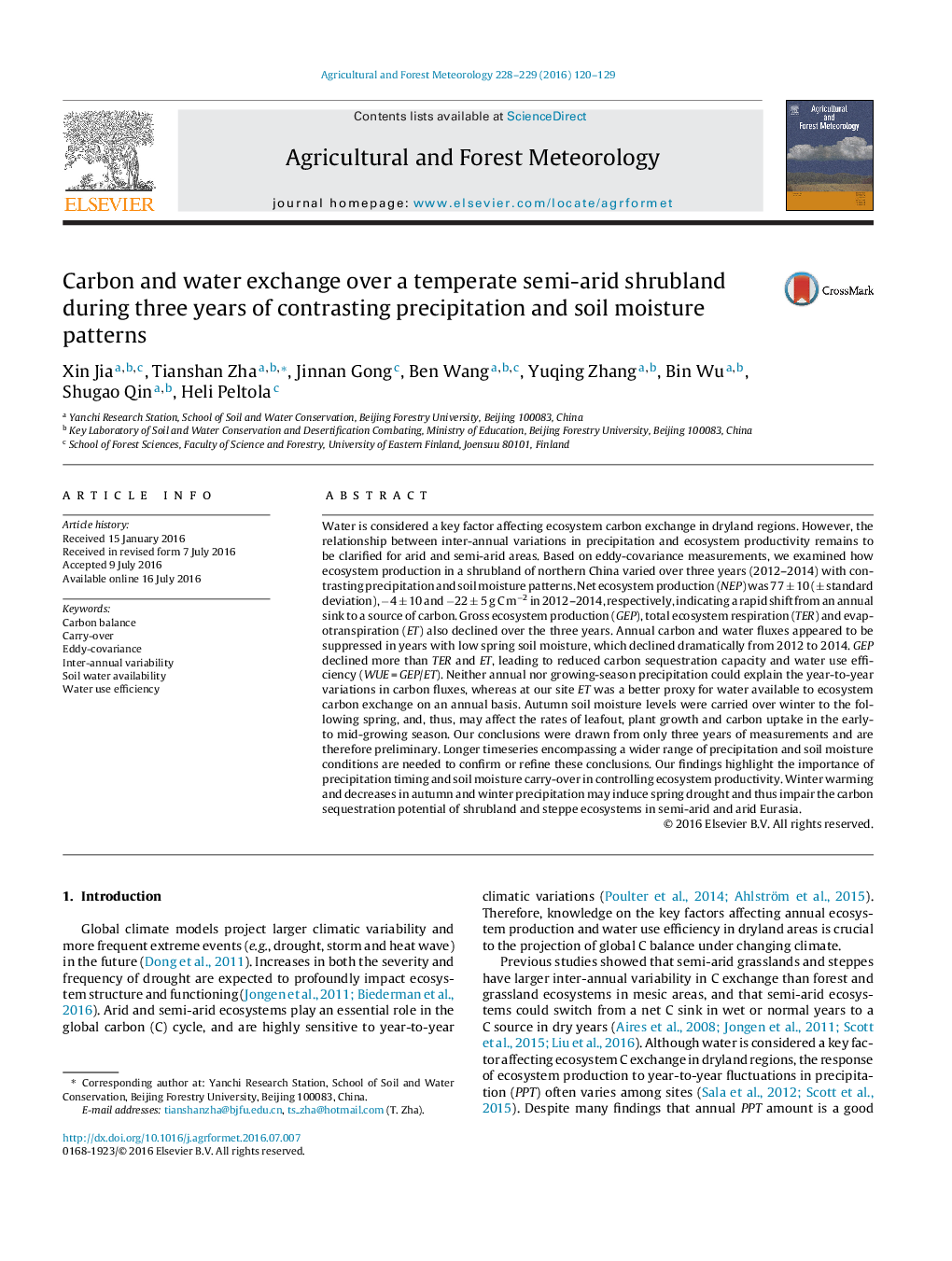| کد مقاله | کد نشریه | سال انتشار | مقاله انگلیسی | نسخه تمام متن |
|---|---|---|---|---|
| 6458197 | 158307 | 2016 | 10 صفحه PDF | دانلود رایگان |
- The semi-arid shrubland in northern China can be an annual sink or a source of CO2.
- Spring soil moisture deficit reduced ecosystem production and water use efficiency.
- Precipitation amount could not explain the year-to-year variations in CO2 fluxes.
- Evapotranspiration was a good predictor of annual CO2 flux in this study.
Water is considered a key factor affecting ecosystem carbon exchange in dryland regions. However, the relationship between inter-annual variations in precipitation and ecosystem productivity remains to be clarified for arid and semi-arid areas. Based on eddy-covariance measurements, we examined how ecosystem production in a shrubland of northern China varied over three years (2012-2014) with contrasting precipitation and soil moisture patterns. Net ecosystem production (NEP) was 77 ± 10 (± standard deviation), â4 ± 10 and â22 ± 5 g C mâ2 in 2012-2014, respectively, indicating a rapid shift from an annual sink to a source of carbon. Gross ecosystem production (GEP), total ecosystem respiration (TER) and evapotranspiration (ET) also declined over the three years. Annual carbon and water fluxes appeared to be suppressed in years with low spring soil moisture, which declined dramatically from 2012 to 2014. GEP declined more than TER and ET, leading to reduced carbon sequestration capacity and water use efficiency (WUE = GEP/ET). Neither annual nor growing-season precipitation could explain the year-to-year variations in carbon fluxes, whereas at our site ET was a better proxy for water available to ecosystem carbon exchange on an annual basis. Autumn soil moisture levels were carried over winter to the following spring, and, thus, may affect the rates of leafout, plant growth and carbon uptake in the early- to mid-growing season. Our conclusions were drawn from only three years of measurements and are therefore preliminary. Longer timeseries encompassing a wider range of precipitation and soil moisture conditions are needed to confirm or refine these conclusions. Our findings highlight the importance of precipitation timing and soil moisture carry-over in controlling ecosystem productivity. Winter warming and decreases in autumn and winter precipitation may induce spring drought and thus impair the carbon sequestration potential of shrubland and steppe ecosystems in semi-arid and arid Eurasia.
Journal: Agricultural and Forest Meteorology - Volumes 228â229, 15 November 2016, Pages 120-129
